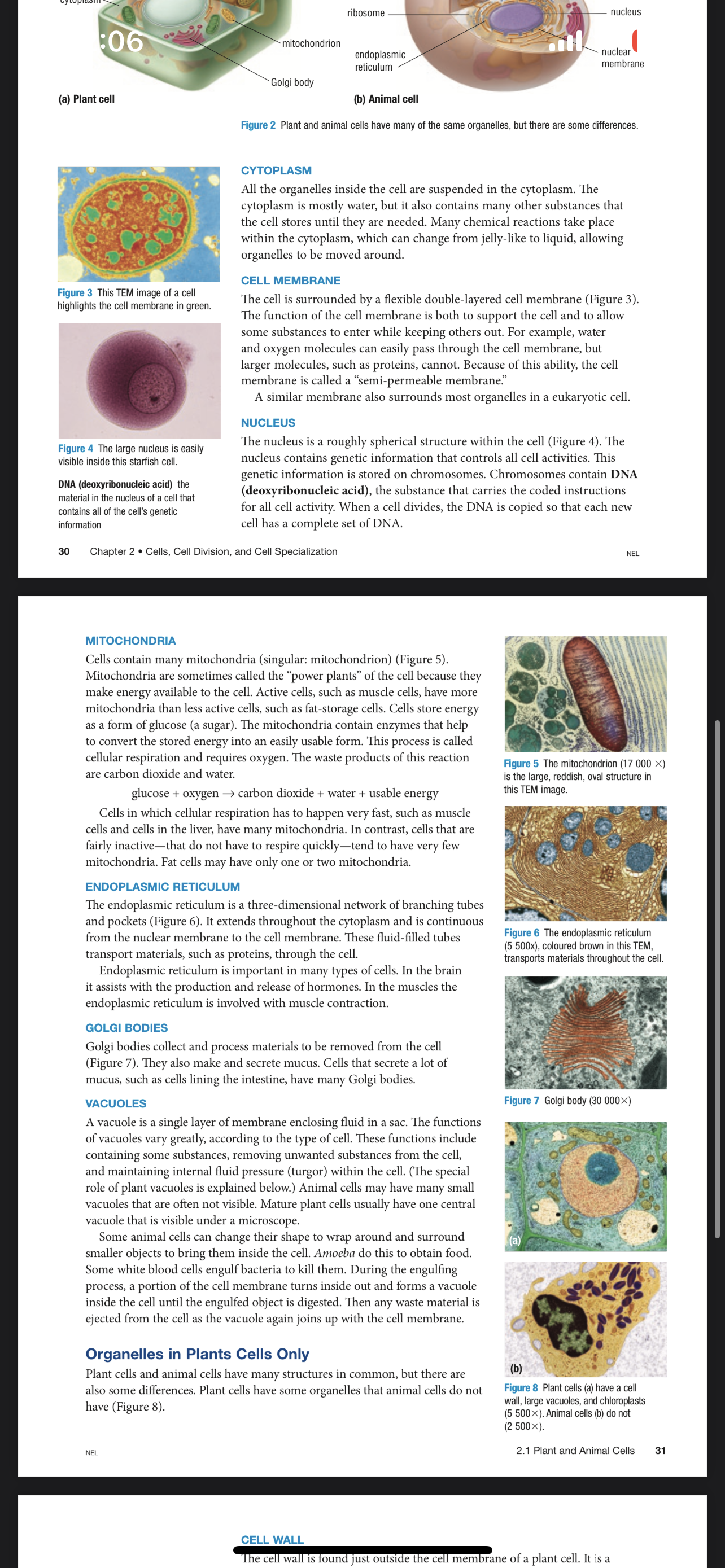What are the main organelles found in plant and animal cells and what are their functions?

Understand the Problem
The question is asking for information related to the structures and functions of various organelles found in plant and animal cells, including details about the cytoplasm, cell membrane, nucleus, mitochondria, endoplasmic reticulum, Golgi bodies, vacuoles, and the differences between plant and animal cells.
Answer
Plant and animal cells have nucleus, mitochondria, ER, Golgi apparatus. Unique to plant cells are chloroplasts, cell walls, and a large vacuole.
The main organelles in plant and animal cells include the nucleus, mitochondria, endoplasmic reticulum, Golgi apparatus, and lysosomes. Plant cells also have chloroplasts, cell walls, and a large central vacuole.
Answer for screen readers
The main organelles in plant and animal cells include the nucleus, mitochondria, endoplasmic reticulum, Golgi apparatus, and lysosomes. Plant cells also have chloroplasts, cell walls, and a large central vacuole.
More Information
Both plant and animal cells share several key organelles crucial for cellular function such as energy production, protein synthesis, and genetic information storage. However, plants have additional structures like chloroplasts for photosynthesis, a cell wall for support, and large vacuoles for storage and maintaining cell pressure.
Tips
A common mistake is forgetting that lysosomes are mainly found in animal cells and chloroplasts in plant cells.
Sources
- Animal Cells versus Plant Cells | Biology for Non-Majors I - courses.lumenlearning.com
- Cell Organelles (Animal and Plant) - The Definitive Guide - biologydictionary.net
AI-generated content may contain errors. Please verify critical information